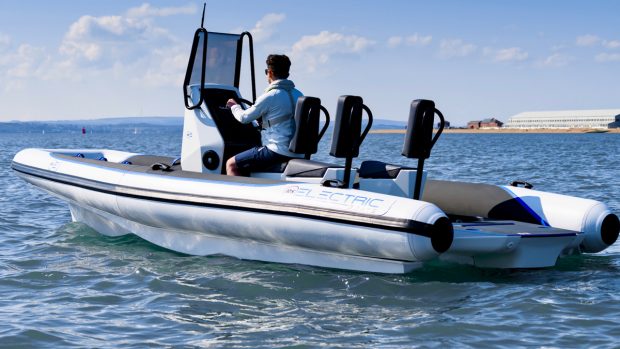The Egret crew inch ever closer to landfall
Day 30: Brazil beckons
Position: 05° 29.28S 32° 44.52W
Course: 227 degrees
Distance travelled: 3018.2 nm from Gibraltar
Average speed: 6.5 knots
Conditions: 5-7′ swells with chop SSW, apparent wind 17.1 knots SSE
Scott and Mary Flanders left Gibraltar on 16 September, and we’ll be following their journey every step of the way, thanks to this unique online “blog”. For the first instalment of their diary, click here
The wind and seas picked up around 0200 this morning. By 0800 the seas had tightened up and were moving more towards the beam. The wind is blowing between 14-20 knots, which is not much but we are in a current now so the waves have more punch. At 0830 we increased RPM’s from 1500 to 1600 giving more water flow over the keel and stabiliser fins, lessening the side-to-side motion. The motion is a little jerkier now than during the entire trip to date. Like everything it pays to save. Egret’s fuel reserve from conservative early RPM’s is so great that range is not an issue.
Last night just before dark Egret passed within 25nm of the Brazilian Archipelago, Fernando De Noronha, about 160nm off the Brazilian coast. Fernando De Noronha was discovered in 1503 by Amerigo Vespucci. Darwin visited the island in 1832 as well. Today 70% of the island is a national park. Had our timing been different, we would have stopped by for a couple of days to explore the island. Even though our C-Map charts show good detail, a night time approach with the west setting currents plus not knowing the accuracy of the charts meant we unfortunately had to give it a pass. We met a sailboater in a self-designed flat bottom, wood/epoxy 40′ ketch, (that had started life as a sloop, no less) in Grand Canaria and later in La Gomeria, Canary Islands. Fernando De Noronha was his single stop between La Gomeria and Australia! He planned to sail south of the Cape of Good Hope. He had no water maker, or communications except for a VHF, probably a hand held GPS and a wife that was going as well. When we left La Gomera he was trying to buy a short-wave receiver for weather. A little too intrepid for us.
Egret’s Iridium satellite phone’s reception has been getting worse daily. We send e-mail’s over the phone as well as depend on the phone for important or emergency calls. Steve read yesterday in a RCC cruising guide to the South Atlantic that Iridium does not work in the South Atlantic. We are trying to sort that out now so if there is an interruption in daily reports Egret did not sink or come to grief! Egret is so close to her landfall in Bahia de Salvadore we can smell land.
Mary and I were sitting in the salon with Steve watching mountains of brilliantly clear blue water sweep beneath Egret’s transom. For coastal cruisers, these might be eye-popping monsters, but in a short time you realise no harm done and your little ship is riding up and down like the proverbial duck. You can be entertained for hours with not a word exchanged watching the shearwaters. These nomadic birds are nature’s finest. As waves build they create a slight positive pressure raising the shearwaters up over their tops to fall into the slight vacuum on the back side. They sweep from wave trough to trough twisting, turning, working the wind and waves. They turn with their wingtip down just fractions of an inch above the water, the other raised high. Next are the petrel’s, small busy birds with constantly beating wings darting here and there hundreds of miles out at sea.
Next are the fish. Whales, sharks, dolphins, enormous sunfish drifting the ocean currents feeding on jellyfish, free jumping billfish, feeding tuna in acres of water churned white, accompanied by clouds of birds feeding on the fleeing baitfish, on down to the mesmerizing flying fish pushed up by the boat and scattering down wind or fleeing in the distance from predators.
Next come the boats. When you haven’t seen a ship for days, a target on radar is welcomed and watched to see if you can see it with binoculars before it passes. Sighting a small, private boat far at sea is instant bonding, chatting back and forth sharing greetings, destinations and sometimes weather.
Sunrises and sunsets at sea are special. Free of pollution everything is brilliant and exaggerated. The stars are brighter and seem to be more of them. The moon illuminates the ocean waves to daylight at times, darkness at times illuminating the stars. With the air so clear the stars throw their own light on the ocean.









